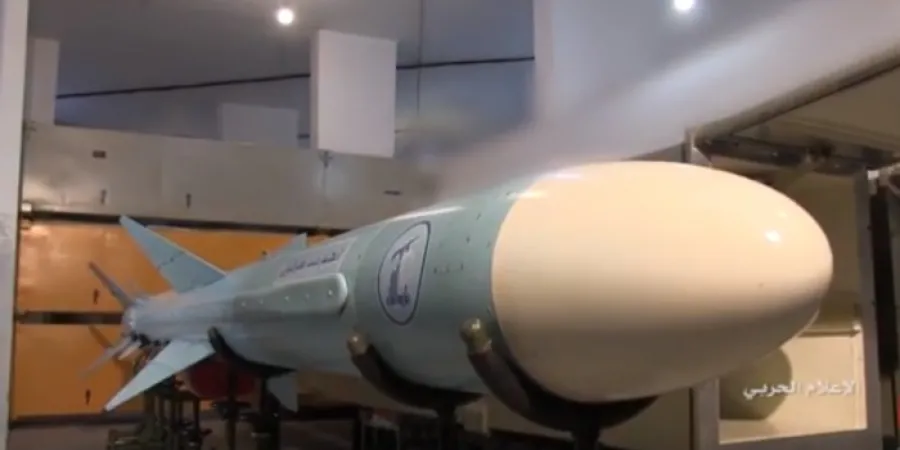Hezbollah Reveals Anti-Ship Missile Cache
A video clip released by Hezbollah shows a storage facility containing a number of C-802 missiles of the same type that hit IDF Navy missile frigate Hanit during the Second Lebanon War. Several elements were masked in the clip – possibly to prevent the IDF from identifying the location
Ami Rojkes Dombe
|
16/09/2019
Hezbollah has released footage taken at a storage facility containing C-802 shore-based anti-ship missiles of the same type that hit IDF Navy missile frigate Hanit during the Second Lebanon War in 2006. Shore-based anti-ship missiles constitute – at least in the eyes of Hezbollah – an element of deterrence opposite Israel's Saar-class missile frigates. The release of such a clip in the context of the recent events at the northern border near Avivim indicates that Hezbollah is not interested in a military confrontation with Israel at this point, but prepares for one in the future.
The clip the organization has released shows several C-802 missiles, which apparently indicates that Hezbollah has an inventory of such missiles. By releasing the clip, Hezbollah taunts the Israeli efforts to prevent the smuggling of arms and shows that it continues to stock high-value arms, the Israeli efforts notwithstanding. It is unclear, however, when Hezbollah had received the missiles and when the video clip was taken.
One point that should be noted involves the masking of parts within the space of the storage facility where the missiles are stored. The reason for the masking is unclear, but it may be assumed that it was intended to prevent Israel from identifying the location of the apparently underground facility.
Another point to be considered is whether the clip was taken at a shore base out of which Hezbollah intends to launch these missiles at IDF Navy vessels, or at a storage facility located some distance away from the shore, from which these missiles would be transported to their firing position.
A video clip released by Hezbollah shows a storage facility containing a number of C-802 missiles of the same type that hit IDF Navy missile frigate Hanit during the Second Lebanon War. Several elements were masked in the clip – possibly to prevent the IDF from identifying the location
Hezbollah has released footage taken at a storage facility containing C-802 shore-based anti-ship missiles of the same type that hit IDF Navy missile frigate Hanit during the Second Lebanon War in 2006. Shore-based anti-ship missiles constitute – at least in the eyes of Hezbollah – an element of deterrence opposite Israel's Saar-class missile frigates. The release of such a clip in the context of the recent events at the northern border near Avivim indicates that Hezbollah is not interested in a military confrontation with Israel at this point, but prepares for one in the future.
The clip the organization has released shows several C-802 missiles, which apparently indicates that Hezbollah has an inventory of such missiles. By releasing the clip, Hezbollah taunts the Israeli efforts to prevent the smuggling of arms and shows that it continues to stock high-value arms, the Israeli efforts notwithstanding. It is unclear, however, when Hezbollah had received the missiles and when the video clip was taken.
One point that should be noted involves the masking of parts within the space of the storage facility where the missiles are stored. The reason for the masking is unclear, but it may be assumed that it was intended to prevent Israel from identifying the location of the apparently underground facility.
Another point to be considered is whether the clip was taken at a shore base out of which Hezbollah intends to launch these missiles at IDF Navy vessels, or at a storage facility located some distance away from the shore, from which these missiles would be transported to their firing position.



